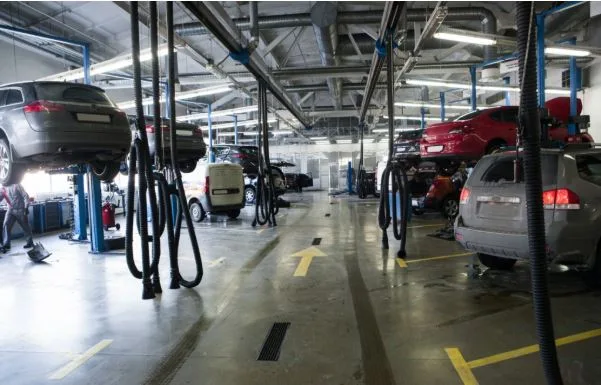How Connected Warehouse Systems and Automation Keep 3PL Operations on Track
What’s Changed Inside Warehouses
Anyone who’s been around logistics for a while can see how different warehouses look now. Orders don’t come from one or two places anymore. They show up from websites, retail partners, and subscription models, all expecting the same fast turnaround. For companies that manage fulfillment for others, keeping that pace steady takes more than just manpower.
That’s where better connected systems have started to matter. When your warehouse tools actually share information, small errors stop snowballing. You don’t have to chase updates or wonder if inventory numbers are right. It’s not about fancy tech, it’s about making daily work less chaotic.
Getting Systems to Talk to Each Other
A lot of 3PL teams start out running separate programs for inventory, shipping, and order management. It works fine until volumes climb. Then you start noticing the gaps. Maybe tracking data doesn’t match what’s on the floor, or orders get held up because two systems aren’t in sync.
Once everything feeds into the same network, that friction fades. A barcode scan updates inventory and tracking automatically. Office staff can see what’s happening in the aisles without interrupting the floor team. That shared visibility helps everyone stay on the same page.
Companies like ShipBob and Prep Partners Group figured this out early. They use connected systems across multiple facilities so every location reports to the same database. It’s not a luxury feature anymore, it’s how amodern 3PL keeps moving at scale.
Letting the Software Handle the Boring Stuff
Automation in warehouses isn’t always what people imagine. It’s less about machines and more about rules that keep things flowing. If an order can route itself to the right dock or print its own shipping label, that’s automation doing its job.
When those tasks run in the background, workers can focus on exceptions such as damaged stock, packaging issues, and customer notes instead of typing data all day. During peak season, this makes a big difference. A good setup lets a smaller team handle big order spikes without pulling in temps or rushing.
I’ve seen warehouses use simple automation to keep their sanity during holiday surges. The system sorted orders by size and carrier, while staff just followed the prompts. It wasn’t perfect, but it kept things steady when they could’ve easily fallen behind.
Keeping Everyone in the Loop
Nothing slows a warehouse faster than miscommunication. The front office promises one delivery date, but the dock is short on stock. Drivers wait around because the paperwork isn’t ready. Problems like that shrink when data moves live between systems.
When every update happens in real time, people stop working off old information. If a shipment is delayed, clients see it right away. If inventory drops below a threshold, purchasing knows before orders back up. It sounds small, but those minutes matter.
The constant feedback also helps with planning. Managers can see which lines are running slow and move people before things pile up. The more visibility, the less firefighting later.
When Orders Start Stacking Up
The real stress test for any 3PL setup is volume. It’s easy to stay organized with a few hundred orders. It’s different when thousands hit at once. Without connected systems, the team ends up chasing labels, rechecking stock, and fixing errors after the fact.
With live data and automation in place, big order waves become manageable. Orders get sorted, inventory is checked automatically, and pickers see the right items in the right bins. Even during major retail events, the process holds together.
I remember a mid-sized provider using a simple cloud-based system during a sudden product drop from one of their clients. The orders came in faster than expected, but the warehouse didn’t fall behind because every step was tracked live. The team stayed calm because they could see exactly what was happening.
Accuracy Always Pays for Itself
When mistakes go down, profits go up. Wrong shipments, missing stock, or double entries all cost money. A connected system keeps the numbers honest from the first scan to final delivery. If something goes wrong, there’s a clear trail showing where it happened.
That kind of traceability helps maintain client trust. They can see that the warehouse is in control, not guessing. And internally, it keeps people accountable without adding blame. The financial side follows naturally. Fewer returns, less overtime, and smoother operations free up cash that can be reinvested. It’s not flashy savings, just consistent, steady improvement.
Taking the First Steps Toward a Better Setup
Most 3PLs don’t have to overhaul everything to start improving. Connecting existing software is often enough. Once order data, inventory, and shipping updates live in one place, automation can be layered in gradually.
Involving the warehouse team early helps a lot. They know which parts slow things down and where mistakes usually happen. When they help design the process, the technology fits better with real workflows. Some companies go all in with specialized tools from providers like Prep Partners Group or ShipBob. Others piece together smaller systems that fit their size. There’s no single right answe, the best setup is the one people actually use every day.
Where Things Are Headed
Technology in logistics keeps moving, but the goal hasn’t changed: get orders right and keep customers informed. Live data and connected tools make that easier, but they’re not magic fixes. They still depend on planning, training, and consistent use.
For 3PL companies, the next step will probably involve more predictive tools, systems that spot problems before they cause delays. But that only works if the basics are already solid. A messy setup doesn’t get smarter just because AI is added on top.
The companies that get ahead are the ones that stay realistic. They build systems that work now and can grow later. That kind of steady improvement always beats chasing every new feature that comes along.
A Final Thought
Running logistics is still about people, the tech just helps them stay organized. When your systems share data, small problems stay small. When routine tasks are automated, workers can focus on what really matters. And when clients can see what’s happening in real time, everyone trusts the process more.
That’s what today’s 3PL work looks like at its best. Not perfect, but steady, accurate, and built to handle whatever comes next.




